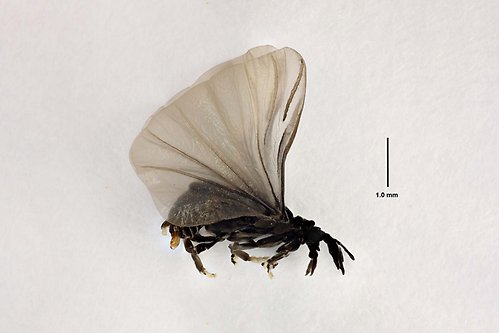Inspired by biology and entomology
— During my biology studies, I participated in many field trips focused on systematics and species knowledge, which shaped my direction and channeled an interest I've had since childhood. The opportunity to start a doctorate, the freedom to pursue side paths and shape my own projects and research questions - academic freedom - were all factors that led me into a career in research.
What drives me and characterizes me as a person is my curiosity for discovery
After a postdoctoral period at the Natural History Museum in London, Johannes realized the potential of working in natural history museums to advance his research career. When a research position in entomology opened at the Swedish Museum of Natural History, he naturally applied for it.
—What drives me and characterizes me as a person is my curiosity for discovery, says Johannes Bergsten.
Exploring beetles and twisted winged parasites
— I focus on biodiversity, striving to map what exists on our planet and how life has evolved. Most of my research revolves around beetles and twisted winged parasites (Strepsiptera), two insect groups that are actually each other's closest relatives.
For over 15 years, Johannes Bergsten has led a project exploring the biodiversity in wetlands and waterways in Madagascar. Here, he has discovered and collected a large number of undescribed species of aquatic beetles, which has more than doubled the known fauna of endemic diving beetles on the island. Johannes Bergsten has also been involved in initiating a concrete conservation project for the Ambohitantely highland forest on Madagascar, which harbors many endemic species. All is done through local collaboration to contribute to knowledge transfer.
— It was a proud moment when my first Malagasy doctoral student, Tolotra, defended his thesis at the University of Antananarivo. Tolotra had been with me since my first expedition to Madagascar over ten years earlier, and we have shared many amazing and challenging experiences and adventures around Madagascar together.
Link to Tolotra's dissertation External link, opens in new window..
External link, opens in new window..
Strepsiptera, or twisted-winged parasites, is a more recent research interest but very rewarding. The more we look into this enigmatic group of insects the more suprises we discover says Johannes Bergsten. His research group is doing progress on understanding the diversity and evolution of the largest Strepsiptera genus Stylops which parasitizes wild Andrena mining bees. He is also leading an endeavor to sequence the whole genome of the species Stylops ater to reference genome standards within the European Reference Genome Atlas project.
The biggest surprise
A major surprise came when the research team was studying Madagascar's whirligig beetles and discovered, through phylogenetic analyses with fossil dating, that a particular endemic species in small rainforest streams in Madagascar is a true living fossil External link..
External link..
Reversing the deforestation trend
Natural forests are among the most important assets we have in the fight against climate change and biodiversity loss
— I want to contribute to mapping the biological diversity of our planet. It's urgent because human exploitation is causing an ongoing sixth mass extinction. I want to help reverse the trend of the remaining natural forests being continuously cleared and disappearing in Sweden and Madagascar. Natural forests are among the most important assets we have in the fight against climate change and biodiversity loss, says Johannes Bergsten.
Contact details

Johannes Bergsten
Senior curator
Zoology
johannes.bergsten@nrm.se



